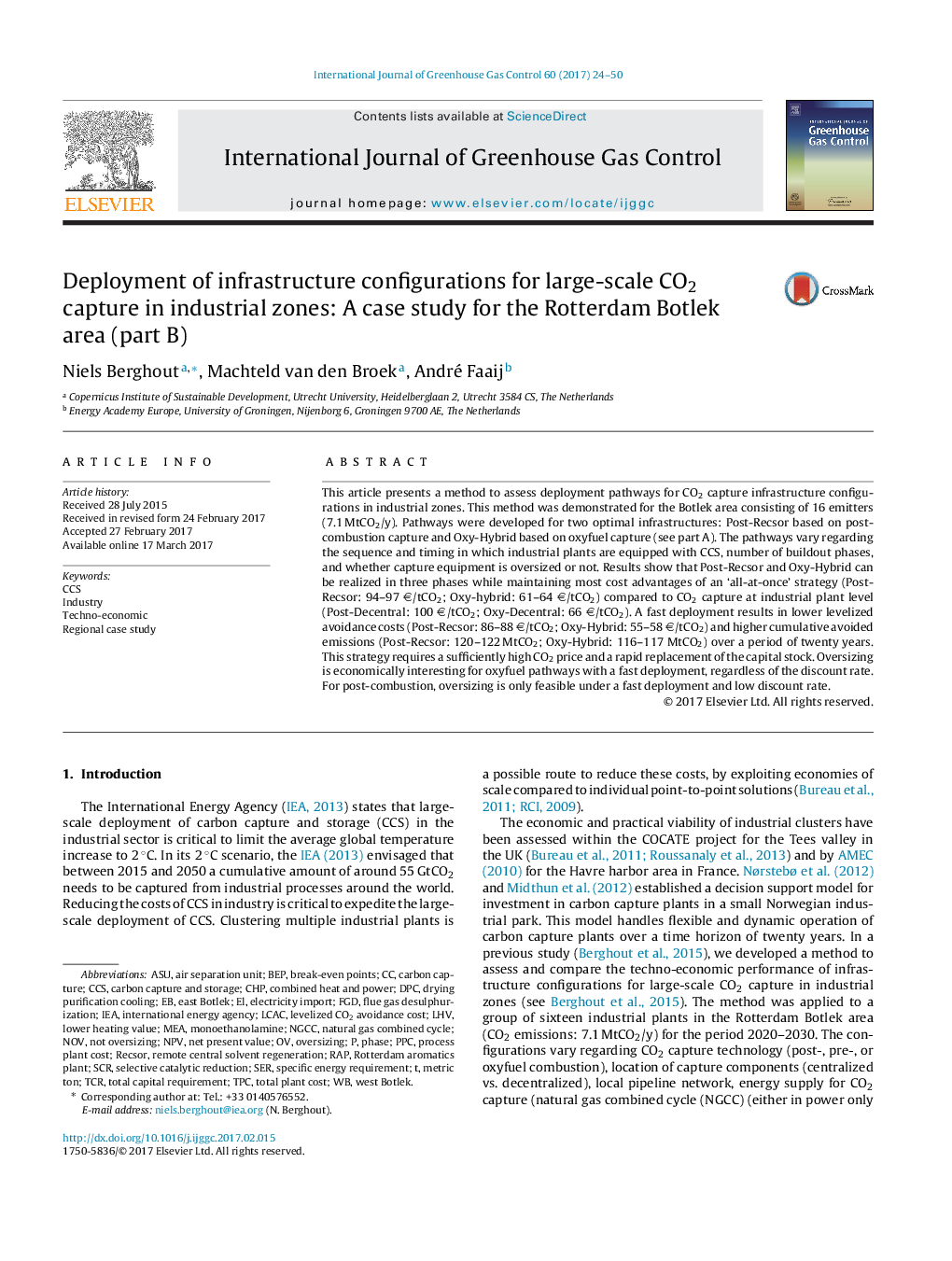| کد مقاله | کد نشریه | سال انتشار | مقاله انگلیسی | نسخه تمام متن |
|---|---|---|---|---|
| 5479077 | 1521959 | 2017 | 27 صفحه PDF | دانلود رایگان |
عنوان انگلیسی مقاله ISI
Deployment of infrastructure configurations for large-scale CO2 capture in industrial zones: A case study for the Rotterdam Botlek area (part B)
دانلود مقاله + سفارش ترجمه
دانلود مقاله ISI انگلیسی
رایگان برای ایرانیان
کلمات کلیدی
NGCCLCACSpecific energy requirementDPCBEPTCrTPCIEAPPCMEAFGDLHVASUCCSRAPCHPInternational energy agency - آژانس انرژی بین المللیlower heating value - ارزش حرارت پایین ترnet present value - ارزش خالص فعلیSER - برای بودنOversizing - بیش از حدCombined Heat and Power - ترکیب گرما و قدرتmetric ton - تن متریک یا تن هزار کیلوییTechno-economic - تکنولوژیکی اقتصادیCarbon capture and storage - جذب و ذخیره کربنFlue gas desulphurization - سولفوریزاسیون گازسوزIndustry - صنعت Carbon capture - ضبط کربنPhase - فازNPV یا negative predictive value - مقادیر پیش بینی شده منفیMonoethanolamine - مونو اتانولامینnov - نوامبرair separation unit - واحد جداسازی هواnatural gas combined cycle - چرخه ترکیب گاز طبیعیSelective catalytic reduction - کاهش کاتالیزوری انتخابی یا کاهش کاتالیستی انتخابیSCR - یکسوساز کنترلشده با سیلیکون
موضوعات مرتبط
مهندسی و علوم پایه
علوم زمین و سیارات
فرآیندهای سطح زمین
پیش نمایش صفحه اول مقاله

چکیده انگلیسی
This article presents a method to assess deployment pathways for CO2 capture infrastructure configurations in industrial zones. This method was demonstrated for the Botlek area consisting of 16 emitters (7.1 MtCO2/y). Pathways were developed for two optimal infrastructures: Post-Recsor based on post-combustion capture and Oxy-Hybrid based on oxyfuel capture (see part A). The pathways vary regarding the sequence and timing in which industrial plants are equipped with CCS, number of buildout phases, and whether capture equipment is oversized or not. Results show that Post-Recsor and Oxy-Hybrid can be realized in three phases while maintaining most cost advantages of an 'all-at-once' strategy (Post-Recsor: 94-97 â¬/tCO2; Oxy-hybrid: 61-64 â¬/tCO2) compared to CO2 capture at industrial plant level (Post-Decentral: 100 â¬/tCO2; Oxy-Decentral: 66 â¬/tCO2). A fast deployment results in lower levelized avoidance costs (Post-Recsor: 86-88 â¬/tCO2; Oxy-Hybrid: 55-58 â¬/tCO2) and higher cumulative avoided emissions (Post-Recsor: 120-122 MtCO2; Oxy-Hybrid: 116-117 MtCO2) over a period of twenty years. This strategy requires a sufficiently high CO2 price and a rapid replacement of the capital stock. Oversizing is economically interesting for oxyfuel pathways with a fast deployment, regardless of the discount rate. For post-combustion, oversizing is only feasible under a fast deployment and low discount rate.
ناشر
Database: Elsevier - ScienceDirect (ساینس دایرکت)
Journal: International Journal of Greenhouse Gas Control - Volume 60, May 2017, Pages 24-50
Journal: International Journal of Greenhouse Gas Control - Volume 60, May 2017, Pages 24-50
نویسندگان
Niels Berghout, Machteld van den Broek, André Faaij,